France, Paris, late 18th century
Dial signed Delhaux-Lariv, Rue de la Barillerie n. 24, à Paris
Amethyst, fire-gilt bronze, enamel, mechanical movement with striking
An extraordinary mantel clock crafted in the final decades of the 18th century (circa 1790–1800), combining refined craftsmanship, symbolism and scientific complexity. The case is carved from polished amethyst, adorned with fine fire-gilt bronze mounts.
The enamel dial functions as a miniature astronomical calendar, displaying:
Hours (central Arabic numerals, elegant pierced hands),
Minutes (outer ring 1–60),
Day of the month (1–31),
Months and corresponding zodiac signs,
Phases of the moon, shown in a blue arc with a stylized lunar face.
Topped by a putto holding a torch (symbol of light, time or reason), the clock rests on a base decorated with a gilt frieze showing allegories of science and the mechanical arts, referencing Enlightenment ideals.
The clock is signed Delhaux-Lariv, a Parisian clockmaker active in the late 18th century, known for producing sophisticated scientific timepieces.
This clock embodies the intellectual and decorative spirit of late Enlightenment-era France, where horology was both scientific instrument and allegorical art.







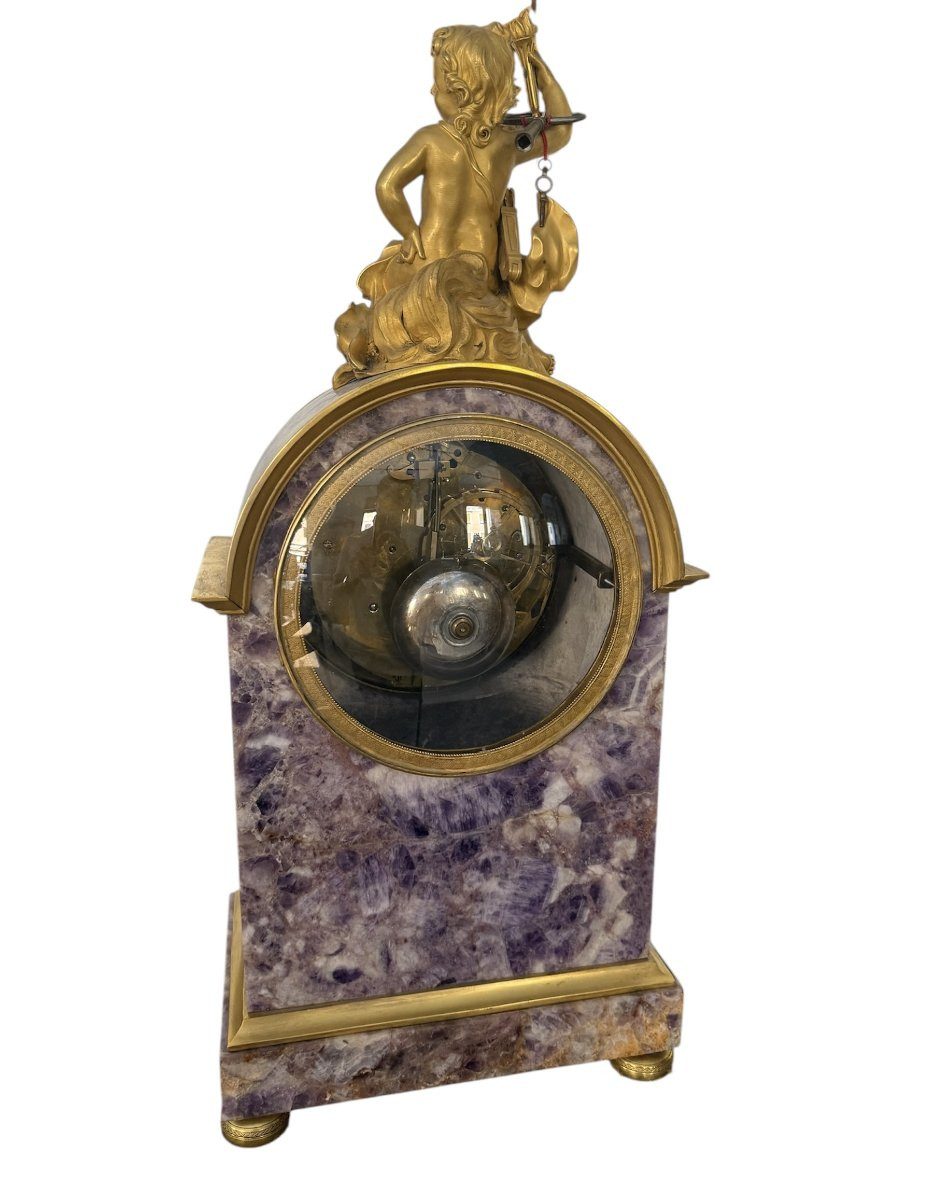
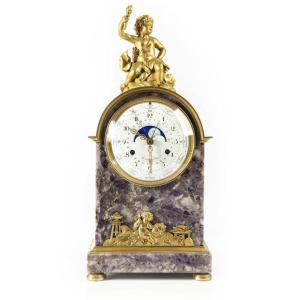








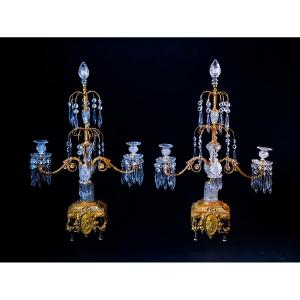


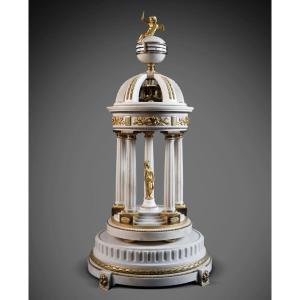
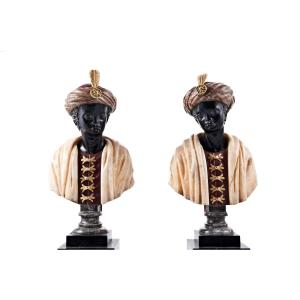



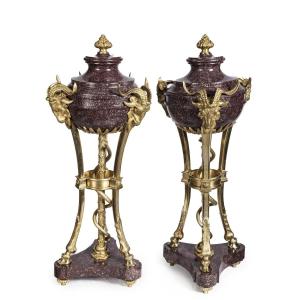



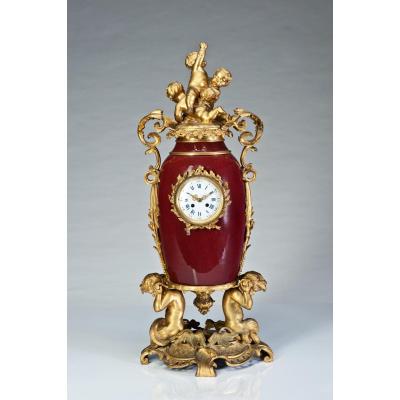



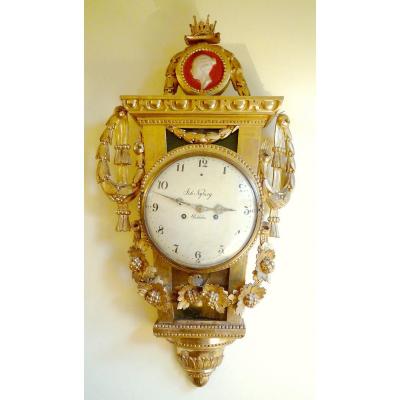




 Le Magazine de PROANTIC
Le Magazine de PROANTIC TRÉSORS Magazine
TRÉSORS Magazine Rivista Artiquariato
Rivista Artiquariato